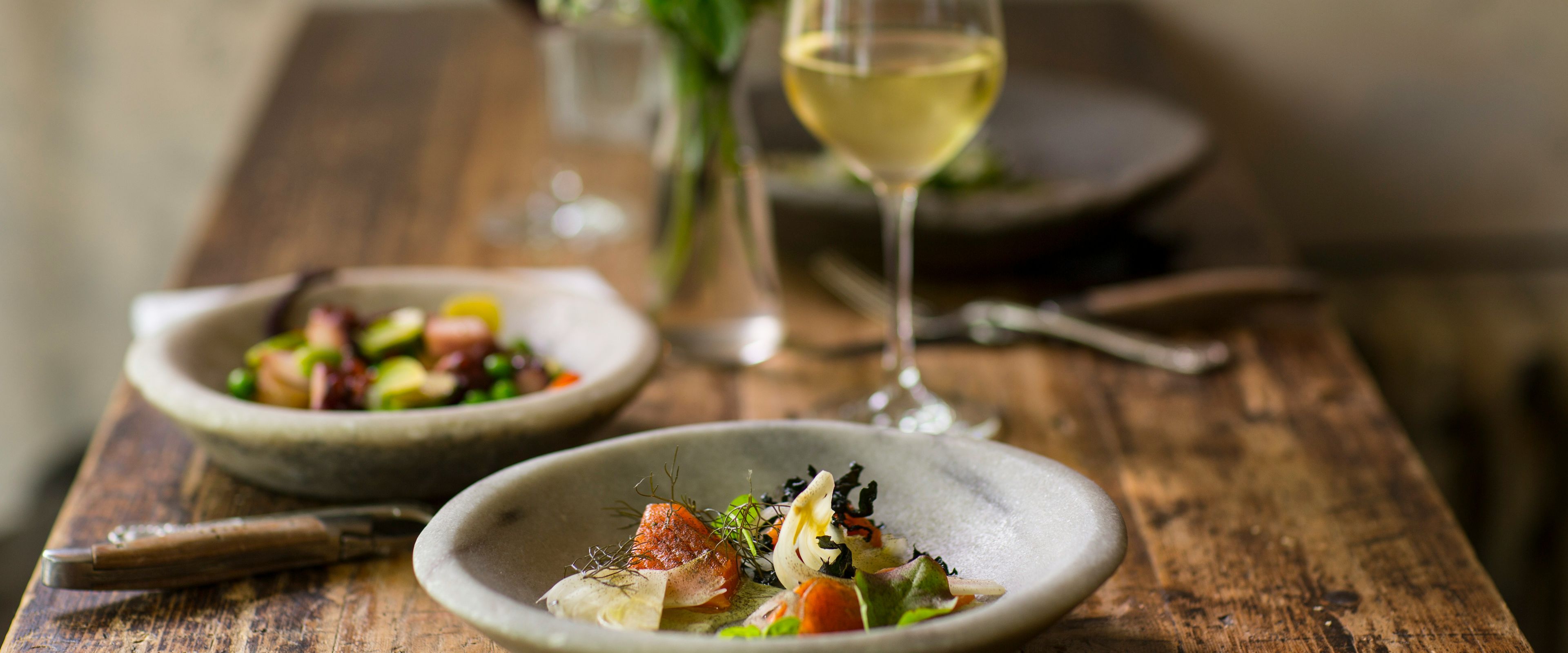
Crazy about wine
5 tips about wine for food
Most people probably know the situation.
You're sitting in a nice restaurant, you've decided on the evening's menu, and all you need is a nice glass of wine.
But then panic begins to spread. Because which wine is the best for turbot? And does the sommelier think I'm a complete novice if I choose something other than a full-bodied red wine with my steak?? HELP!
In reality, there are no wrong choices when you have to match the evening's menu with just the right glass of wine. Do you think the wine goes well with the food? Fine, then it's a good match. It is actually no longer. But having said that, there are some tips that can be good to keep in mind when you are sitting next to the aforementioned sommelier. We have collected 5 of the kind for you.
1. Match with the dominant taste
The classic way to match the wine to your food is to start from the meat or fish that you are going to eat. As such, there is nothing wrong with that either, but you can also choose to think about which flavor is the dominant one in the dish. It is clear that the main ingredient has an influence on the taste of the dish, but quite often the sauce or the preparation method has just as much to say.
2. The intensity of the flavors must be in balance
It is a good rule of thumb that the intensity of the wine should be able to match the intensity of the taste of the food. You are therefore well on your way if you choose a light wine for light food, a full-bodied wine for heavier food, etc. This balance between wine and food gives peace of mind to both soul and taste buds.
Another good rule to remember when matching food and wine is "sweetness with sweetness". This may be self-evident in relation to desserts, but it actually also applies to starters and main courses. There is, for example, a reason why many Danes prefer Amarone for Christmas dinner or Ribera del Duero for lamb. The sweetness in the wine compliments the sweet side dishes of Christmas in the form of red cabbage, browned potatoes, redcurrant jelly and whatever else happens to be on the Christmas table.

3. White for fish and red for meat? Yes, but not always!
A glass of white wine with the fish, and a glass of red wine with the steak. Does this sound like something you've heard before?
There is certainly a good reason for that, but it doesn't always have to be that way.
It is correct that red wine goes well with red meat, but it does not necessarily have to be a strong, full-bodied or heavy red wine, because this of course depends on the type of meat. For example, veal is significantly lighter and sweeter in taste than beef, just as there is a big difference between poultry. Pinot noir from Burgundy is always a sure hit with chicken, but will rarely have enough body and weight for e.g. duck.
What concretely and technically makes red wine a good companion for red meat is the tannins/tannic acid, i.e. what makes the red wine feel dry in the mouth. The tannins go in and attack the proteins in the meat and create a perfect symbiosis. This is the reason why Barolo always goes well with red meat but can often seem a little too violent as a stand alone wine.
4. Geography can help you
It is usually no coincidence that wines from a certain country or region go well with the local cuisine. This has been thought about since the dawn of time, when the grapes were planted. Therefore, you can often start from the local/national wine for the two dishes. Examples include Barolo from Piedmont for truffles, Malbec from Argentina for barbecue, American Zinfandel for barbecue with sweet marinades.
5. Be brave!
What's the worst that can happen if you choose a wine that doesn't go with your meal? Well, at least it's not the end of the world. On the contrary, you are now better off and have more knowledge with you the next time you have to match wine to food. In other words, many good experiences await you if you are adventurous, brave and dare to think a little unconventionally in your wine selection.
Enjoy!


